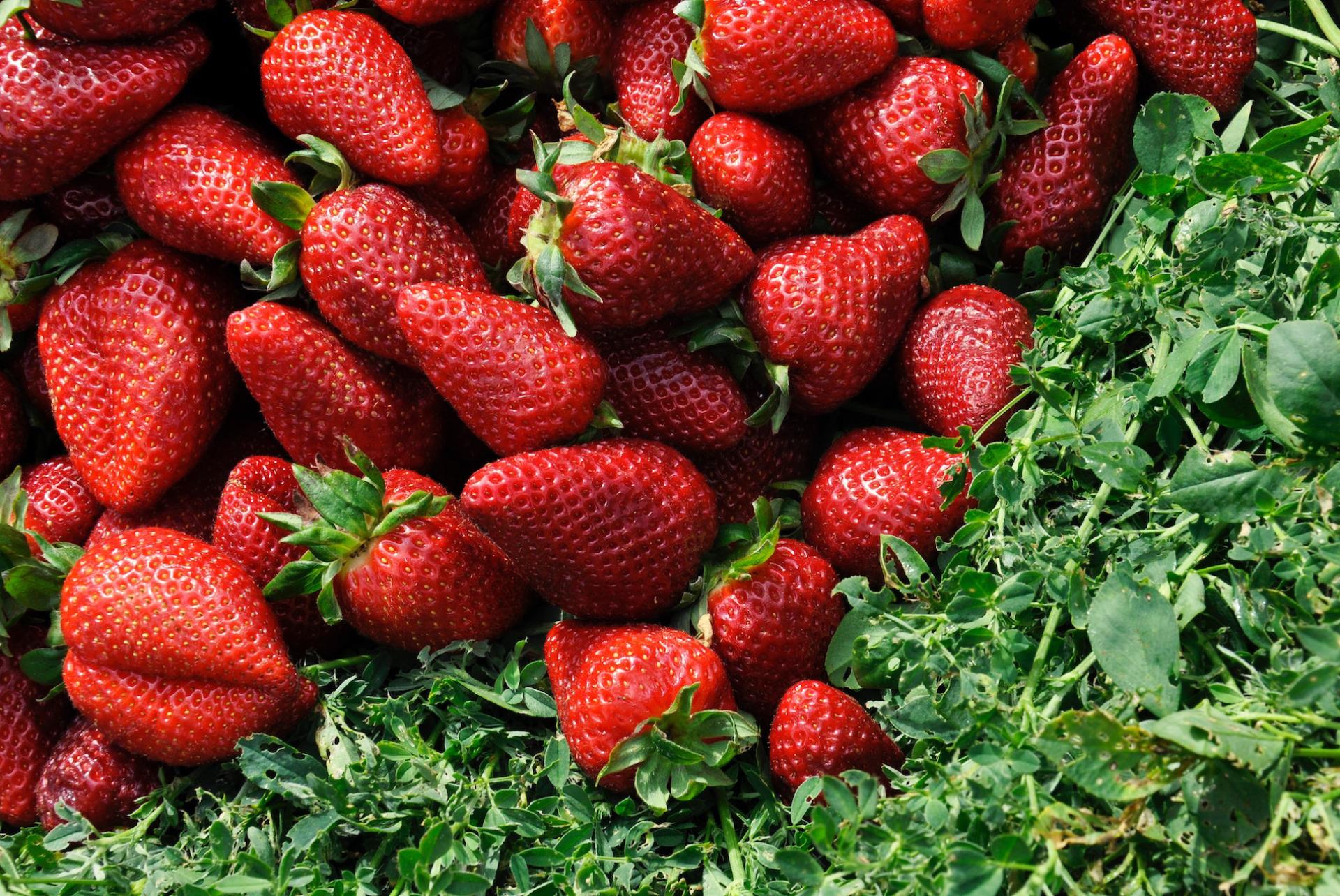You are here
Be A Better Gardener: Strawberry Lawns Forever
Be A Better Gardener: Strawberry Lawns Forever
by Thomas Christopher
Plant strawberries. That’s Dan Jaffe Wilder’s response to the resource-hogging and pollution of the traditional lawn. Dan started his horticultural career while he was completing a degree in botany at the University of Maine, working in what he describes as a typical “mow and blow” crew, where he learned all about conventional, chemically-based lawn care. After graduation and some years in the nursery industry, however, he landed at Garden in the Woods, the 45-acre woodland botanical garden of the Native Plants Trust in Framingham, Massachusetts. While serving as a plant propagator, he became deeply involved in the Trust’s mission, the preservation of New England’s native flora. He joined with the Trust’s Director of Horticulture, Mark Richardson, in creating a walkable lawn composed of native plants for a small orchard.
They had high hopes for purple love grass (Eragrostis spectabilis), a tough wild grass that thrives on poor soils and bears light pink to purple florets in mid-summer, covering the landscape in a purple haze. The real star, though, proved to be the common wild strawberry (Fragaria virginiana), that they had intermingled with the love grass.
An ancestor of our modern garden strawberries, wild strawberry grows naturally in every American state except Hawaii. Adaptable and fast-growing, the wild strawberry crowded out the purple love grass to make a uniform sheet of handsome, three-part leaves that bears five-petalled white flowers in mid to late spring followed by jewel-like, sweet red berries. The wild strawberry lawn also provides fall color to the landscape as its leaves turn attractive shades of red. Best of all, from Wilder’s perspective, was the value of the strawberry plant to wildlife: the plant supports some 75 different species of butterflies and moths, supplying grazing for caterpillars and nectar for the adults. Its fruits are a favorite of chipmunks, squirrels, birds, and box turtles.
Dan took this knowledge with him when he became Director of Applied Ecology at the Norcross Wildlife Foundation, an 8,000-acre wildlife sanctuary in Monson, Massachusetts. He planted a wild strawberry lawn around his house, finding that it could withstand not only foot traffic but even his flock of free-range chickens. The wild strawberry lawn he planted at the Norcross headquarters became a favorite with visitors, especially children who were invited to sample the fruits.
Flourishing in full sun or partial shade (virtually anywhere you can grow traditional lawn grasses), the wild strawberry plants take to most average, well-drained soils. They’ll tolerate dry sandy ones, too, but not clays and wet soils.
When Dan and Mark Richardson started that lawn at Garden in the Woods, they had to grow their own plants from seed. That’s not an especially demanding process, but it is slow. Fortunately, there are nurseries now that offer ready-to-plant seedlings. One economical source is Izel Native Plants (www.izelplants.com); Izel acts as a clearing house, enabling retail customers to purchase flats of plugs from wholesale growers.
If you want to plant a strawberry lawn, first kill the lawn you wish to replace by solarizing it – mow the grass short, and cover it with a clear plastic sheet in mid-summer, leaving the plastic in place for at least a month. Plant the strawberries the following spring, setting out the plugs at a spacing of 12 to 6 inches. The closer you plant, the faster the strawberries will grow together into a solid carpet. Increasing the density of the planting, however, will also increase the cost. One strategy to control this, Dan told me, is to replace the lawn piecemeal. Plant one area, let the strawberries fill in and multiply, and then thin the growth by removing some plants to transplant to another area.
Aside from their support for wildlife, wild strawberries also offer benefits to the gardener that they do not need mowing or, once the plants are established, irrigation. But they aren’t the only native lawn replacement Dan has been exploring. He’s also made wildlife-friendly carpets by combining low-growing native species such as self-heal (Prunella vulgaris ssp. Lanceolata), wild violets (Viola sororia), and pussytoes (Antennaria neglecta). These would combine well with fine fescue grasses, which are the basis of so-called “no-mow lawns.” The fine fescues grow in bunches rather than the solid sheet formed by the more familiar bluegrass and so they are more hospitable to interplanting with Dan’s low-growing natives.
I’m planning to explore all of these alternatives in my landscape. To hear more about
Dan Jaffe Wilder’s work with native lawns, log onto the Berkshire Botanical Garden’s Growing Greener podcast at https://www.berkshirebotanical.org/.
Be-a-Better-Gardener is a community service of Berkshire Botanical Garden, located in Stockbridge, Mass. Its mission, to provide knowledge of gardening and the environment through a diverse range of classes and programs, informs and inspires thousands of students and visitors each year. Thomas Christopher is a volunteer at Berkshire Botanical Garden and is the author or co-author of more than a dozen books, including Nature into Art and The Gardens of Wave Hill (Timber Press, 2019). He is the 2021 Garden Club of America's National Medalist for Literature, a distinction reserved to recognize those who have left a profound and lasting impact on issues that are most important to the GCA. Christopher’s companion broadcast to this column, Growing Greener, streams on WESUFM.org, Pacifica Radio and NPR and is available at berkshirebotanical.org/growinggreener.
Help Our Garden Grow!
Your donation helps us to educate and inspire visitors of all ages on the art and science of gardening and the preservation of our environment.
All donations are 100 percent tax deductible.


